Teresa De Sio. Folk Music by a Native American Neapolitan
We meet Teresa De Sio on the sidelines of her performance at the Divinely New York Festival. It’s a rare opportunity to introduce her to i-Italy’s readers.
In the cold lobby of the hotel where we have an appointment, her colors immediately stand out. Warm colorful clothing, an infinite mass of hair, and a welcoming smile. Her black eyes peer curiously at the interviewer, eyes that look both up close and faraway.
At first, it almost seems as though she’d like to ask us questions. But we soon begin a conversation free of small talk, spontaneous, and without any forethought.
“It’s the first time I’ve been to New York on business. But it’s for a rather trivial reason; I don’t like flying.
I’ve turned down several offers. I decided that it was time to overcome this phobia.”
“The reason why I’m so delighted to participate in the "Divinely Festival" is because of the challenge to do it as a complete agnostic even though I believe in the spirituality that the show refers to, spirituality that transcends all of life’s materialism and consumerism.”
“After reflecting on the material to play in this context, I decided to include all of what I usually play. It’s all the things that I probably would include even if I were to play a different venue, but still focus on several aspects such as popular and folk music.”
“I like to say that folk music is the people’s rock music because it’s as alternative and as powerful as rock. Rock music uses different language to say things that commercial or pop music would never say.”
”It also uses the power of rhythm in the same way. Rhythm and content are two key factors in my music. Of course part of me is Neapolitan and therefore it’s the most melodic aspect since Naples is considered to be the birthplace of melody.”
“And with folk music there’s a lot of talk about the devil’s hand, god, and saints who are not exactly god...but something different.”
“I imagine it as a world suspended in half, and the divine is interpreted in a “syncretic” way, that is, part of the divine is inside each of us and lives alongside the traditions that are essentially pagan. These devils are invoked for various reasons, and one more than any other is very dear to me: the myth of the spider bite which is connected to the musical and dance traditions of pizzica and tarantismo.”
“It’s music that I love very much, that I know, and that inspired me to write my first book Metti il diavolo a ballare (Make the Devil to Dance), a story set in Salento during the Fifties. The protagonist is a teenager who suffers from the spider’s bite and she has to dance as part of the cure; the musicians would go to the patient’s home and play there for days until the evil within has been expelled and the tarantata [the one who was bitten by the spider] is saved. It’s a novel made up of many characters who witness the girl’s suffering. There is also a noir quality, a mystery that is only revealed at the end of the novel.”
The conversation is very pleasant and becomes almost playful. We ask her to introduce herself as a musician to someone who doesn’t know her – to the American public, for example.
“I am a folk musician, a musical genre that surely Americans are familiar with, because every country has its own folk music tradition. In Italy, I’m sorry to say, folk is not well-regarded and receives no institutional support.”
“Folk music is tradition, it’s our history; if we don’t know our own history, that is, what we are and what we were, we don’t have a clear future.”
“Throughout my 25 year career I’ve come a long way in music. By playing and writing I’ve arrived at my own style of folk music, including the fact that I’m able to use the Neapolitan dialect and other things.”
“When I started in the Eighties, I mixed it with pop music and this allowed me to sell millions of records. Then towards the end of that decade, I decided to experiment more because I worked for three years with a great musician, Brian Eno.”
“It’s been another long journey in the world of music, combining various styles from jazz to folk, switiching from Neapolitan to Italian.”
“Then in the Nineties I wrote many songs that were more in the style of singer-song-writers. I had the pleasure of singing with many different Italian artists such as Piero Pelù, Ivano Fossati, Raiz, and De Andrè.”
“Fabrizio De Andrè and I had a long and memorable friendship. I shared a song with him that makes me very proud, because I think I’m one of the few composers to have written a song that he sang. And then I worked with Mario Pagani, who for me is a living legend.”
Speaking with Teresa we discover that her relationship with America is not just musical.
“I have very strong familial relationship with New York because my grandmother was a New Yorker, specifically from New Jersey. She spoke to me about the city ever since I was very little. One of our ancestors was a Native American, a Dakota Indian. So I have some American blood.”
“I have been to New York other times, but as I said, this is the first time I’ve played here. I am deeply convinced that my music is relevant here because it’s unlike anything else. And I grew up like many Italians in the Seventies with John Baez, Dylan…. After that I learned to listen to other things but during the first 25 years of my life I mostly listened to American music.”
But first and foremost Teresa De Sio is a woman of the South. It comes through immediately, just by talking with her. We sense the air of her home, the Mediterranean. We see the sun and at the same time we also see the dark side of her land’s sun.
And we hear South American influences in her music, as well as the search for one’s roots and feelings held in common.
“I sing the south. And there is something that distinguishes the southern part of the world. I worked a lot with Gaetano Veloso who I am very in tune with because we have the same kind of approach, that is, writing with references to musical traditions mixed with the powerful sound of rock music. My first New York concert is a little softer than my usual sound which is more intense. We chose a middle path.”
We then bring her back to America while talking about the present moment. We’d like to hear her thoughts on Obama, which reveals her even more.
“As for many people of my generation, for me the election of Obama means ‘the power of imagination,’ as they used to say in those days. In the Seventies it was fantastic yet unimaginable that a person of color could become president of the United States. It was a dream that came true, even if the dream has been put aside to achieve something greater. We hope that we will continue to move in that direction and that’s good. But it seems to me that these initial things have been done in the right spirit.”
Towards the end of our conversation we return to the south. We ask her to talk about Naples and her songs about banditry – and good bandits.
“Naples is an extraordinary music capital. It was the capital of the kingdom before it was ceded to the House of Savoy, and which had, for better or worse, its own well-defined economic and political structure. The dissolution of the kingdom led to decay and gave rise to banditry. I’ve dedicated part of my work to this phenomenon. I consider bandits, then, without weapons of course, to be a model for all those who don’t want to accept limitations. For me, singing about the banditry of the past also means singing about banditry today. Unfortunately, many young people today take things lying down. They don’t have the strength to express themselves and to challenge things as they are.”
We then let her reminisce about her grandmother….
“My family moved here because my grandmother was American. My family’s history is deeply tied to emigration. My great-grandfather was a doctor in Little Italy. You’d never believe it, but he was the doctor who helped with Frank Sinatra’s birth. The next time I come back I finally want to retrace my roots even if it won’t be easy.”
My ancestor’s history, as retold by my grandmother, remains in my memory. My great-grandmother’s mother was a Redskin Indian who met my great-grandfather who was from New York. They ran away and went to live in NJ. Years ago I wrote a song about this called “Ombre Rosse.”
Her music retains a mysterious quality that stems from the cultures that appear seemingly different on the surface. When these cultures meet, however, they recognize their shared qualities and develop from there. They mingle together and become entwined within the life story of a true artist like De Sio and are then reflected in her songs about Native Americans and Neapolitan banditry.






























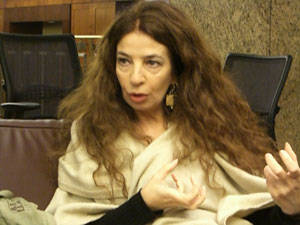
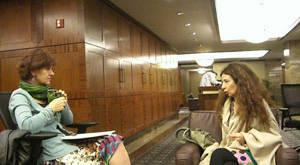
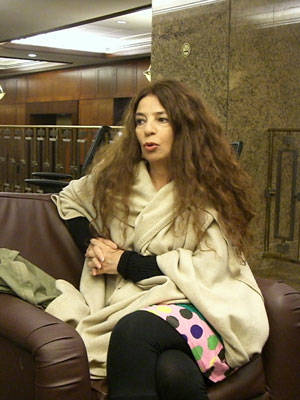
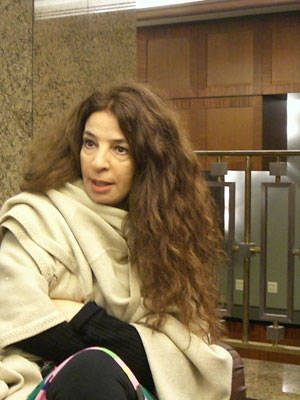
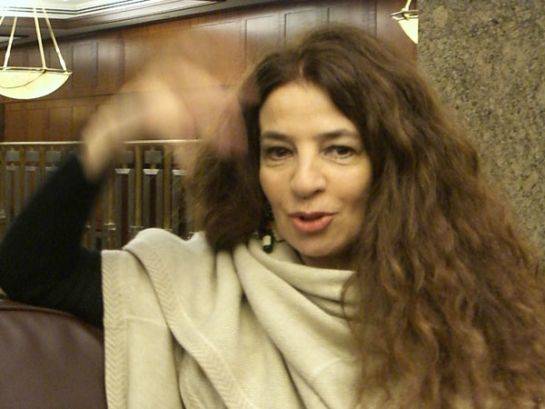
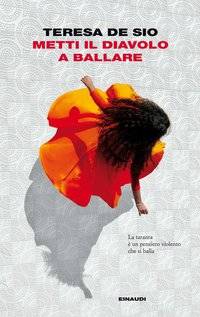




i-Italy
Facebook
Google+
This work may not be reproduced, in whole or in part, without prior written permission.
Questo lavoro non può essere riprodotto, in tutto o in parte, senza permesso scritto.